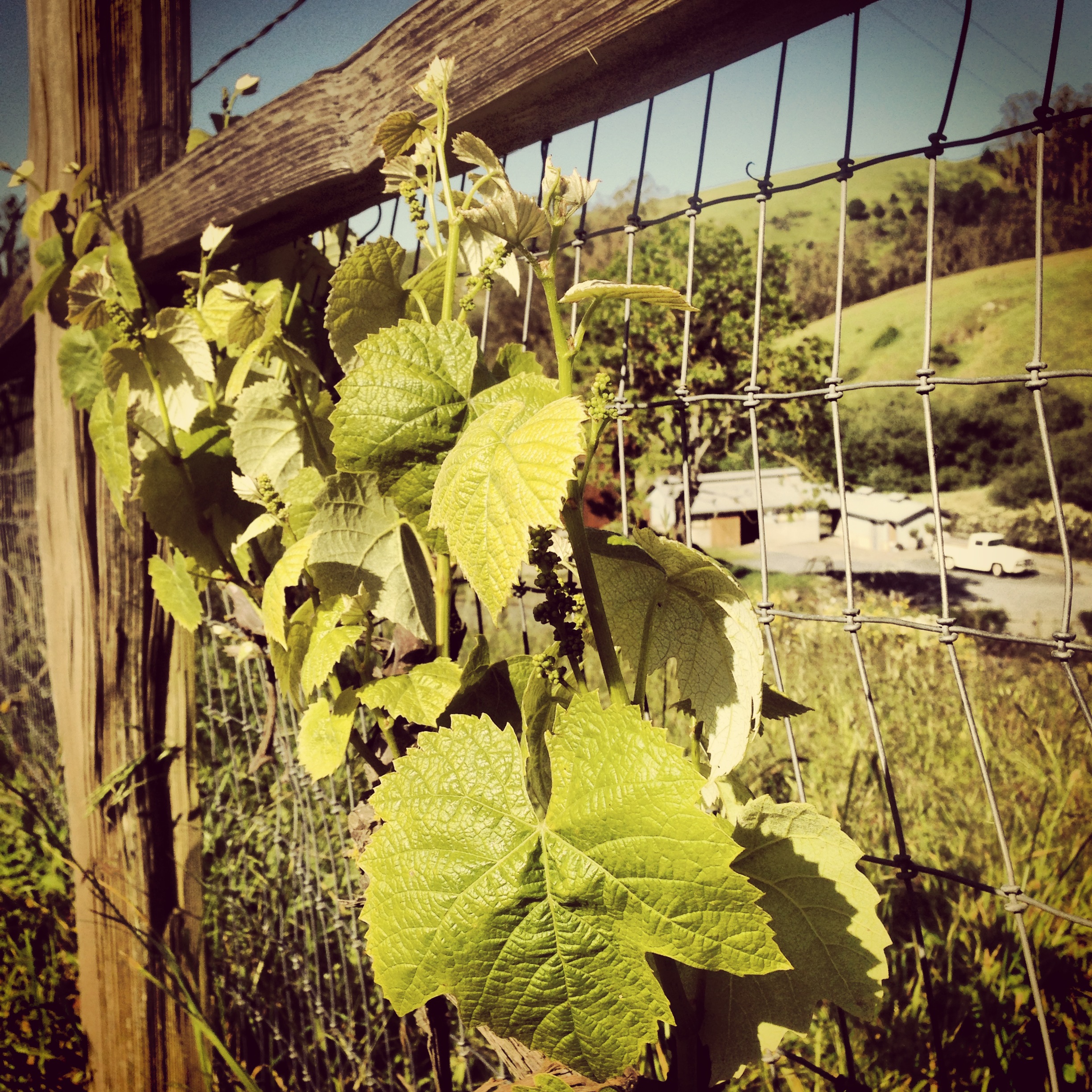It’s been a couple of months since writing on our blog and now with Spring in full force, we're back. Even with little rain over the winter, the fields at Bloomfield Farms have shifted from grasses, to flowers and baby shoots of green. We have young fava beans, grape leaves, snap peas and shoots, chives, green garlic and loads of edible flowers. So how can we celebrate Spring? One way is to preserve grape leave and make dolmas—a savory symbol of the season. This recipe includes fava beans and fresh herbs and a technique to preserve your own grape leaves.
Preserved Grape Leaves
Makes 1 pint
20 to 40 grape leaves, stems removed
Salt
1/4 cup lemon juice
pint jars
Bring a large pot of water to a boil and add enough salt to make it taste like the sea. Get another large pot of water ready for the mason jars and canning lids (the rings, not the gaskets). Get a large bowl of ice water ready too. Boil the grape leaves for 30 to 45 seconds, then plunge into the ice water to cool. Drain them. Take about 6 grape leaves at a time and roll them up into a cigar from the side — not the top or bottom. Pack the grape leaves into the jar, making sure you have about 1 inch of space at the top of the jar. Add lemon juice to each pint jar. Bring the water you used to cook the grape leaves back to a boil and ladle it into the jars. Make sure the grape leaves are covered with the brine. Wipe the edge of the pint jar with a clean towel and seal the jar. Process for 15 minutes in a boiling water bath. These will keep for a year.
Spring Dolmas with fava beans and herbs
Makes 15-20
22-25 fresh vine leaves (spray-free), or a jar of preserved vine leaves ( extra leaves if you have them)
3 tablespoons olive oil
½ cup feta cheese
1 large onion, finely chopped
2 minced garlic cloves or one head of green garlic and include a bit of the green stalk
1/2 cup medium grain rice, washed and drained ( jasmine or basmati ok too)
2 tablespoons pine nuts or other nut like almonds
2 tablespoons currants
2 tablespoons finely chopped flat-leaf parsley
2 tablespoons finely chopped mint
2 tablespoons cilantro
1 tablespoons marjoram
1 tablespoon of chives
1/2 tea spoon fine sea salt ( or to taste)
freshly ground black pepper
lemon zest of 1 lemon
1 cup water, extra
the juice of 1 large lemon
3 tablespoons olive oil, extra
If using preserved vine leaves carefully separate them under running cold water. Rinse well, then place in a bowl of cold water. If using fresh, trim the stalks off the fresh vine leaves, then cook in boiling water for 5 minutes. Drain and rinse. Bring a saucepan of water to the boil and plunge several leaves in at a time, leaving them for 1-2 minutes before removing with tongs to a bowl of cold water. When all are done, drain, shake off excess water and snip off the stems.
Heat the first measure of olive oil in a frying pan over medium heat and cook the onion and garlic gently until soft, then add the fresh fava’s that are already prepped by shelling them, blanching them and taking off the outer skin. Saute for 1-2 minutes, stirring then add nuts, currants, parsley, mint, and other herbs, salt and pepper to taste. Turn off heat. Cook the rice. Once it’s cooked add the herb mixture to the rice mixture. When cool enough, add the feta cheese and lemon zest.
Place the vine leaves smooth-side-down on a clean surface, a few at a time. Put a teaspoon of filling in the middle of each leaf. Fold the stem end up, followed by the sides, then roll up tightly to form a log shape.
Use any torn leaves to line the base of a small heavy-based frying pan, then put the dolmades in the pan, in one layer, seam-side down. Pack them as close as possible to prevent them unfolding during cooking. Cover the top with more leaves. Combine the 1 cup of water with lemon juice and the last measure of olive oil and pour over dolmades. Place a small plate over the top of them, to hold them in place then top with the lid. Bring to a gentle boil, then reduce to a very low simmer and cook for about 1 hour, or until they are very tender. Remove from the heat and let sit, without taking the lid off until cool. When cool, transfer to a container, cover and chill until serving time. Serve with an extra squeeze of lemon.








